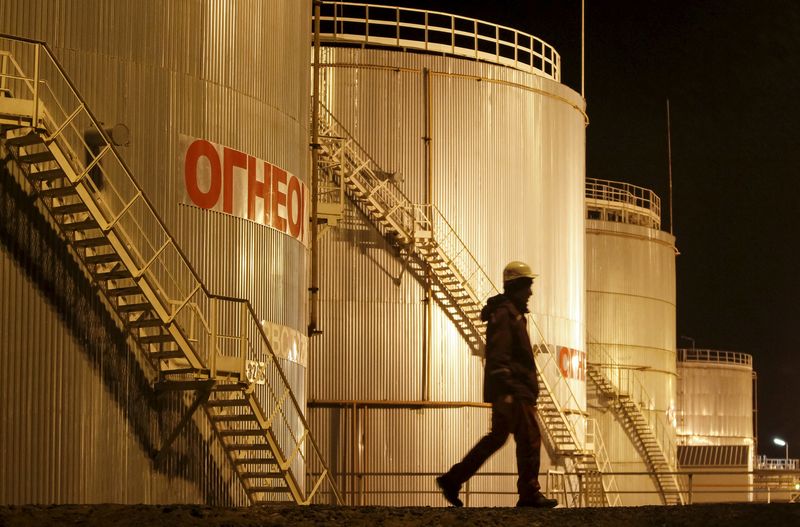By Barani Krishnan
Investing.com – Has OPEC+ put a floor under the oil market, albeit a temporary one? It was the question reverberating across the energy space on Tuesday, with representatives from 23 oil-producing countries meeting in Vienna reportedly discussing additional cuts of 800,000 to 1 million barrels per day to cope with lost demand from China’s coronavirus crisis.
Crude prices remained in a bear market with both Brent and WTI losing more than 20% from their January’s highs. Yet speculation over the maneuvers being plotted by the technical-level meeting of the OPEC+ that will suggest the action to be adopted by the oil/energy ministers of the alliance at their March meeting set the tone.
Brent, the London-traded benchmark for crude, was up 57 cents, or 1%, at $54.78 per barrel by 1:00 PM ET (18:00 GMT), recovering from Monday’s tumble when it slumped beneath the key $55 support level to touch a 13-month low of $54.24.
Brent lost more than 14% at January’s close on Friday for its worst monthly slide since November 2018.
New York-traded West Texas Intermediate, the U.S. crude benchmark, rose 50 cents, or about 1%, to $50.41. WTI snapped the $50 support on Monday to strike a 13-month low at $49.91.
Tuesday’s rebound also did little to alleviate the year-to-date pain for investors who were long oil, with both benchmarks remaining down about 17% for 2020. Brent was also 24% lower now than at its January peak of $71.75 a barrel, while WTI is at a 23% discount to last month’s high of $65.65.
Officials at Tuesday’s meeting in Vienna were considering additional cuts of 800,000 to 1 million bpd to help create a supply “shock” in the oil markets, The Wall Street Journal reported.
It said OPEC+ had initially thought of a 500,000 bpd reduction, but doubled down on that number after realizing that it won't be enough to pull the market out of its current rut.
"If OPEC+ delivers anything less than an additional 1 million barrel per day cut, oil could fall further into bear market territory," said Edward Moya, analyst for OANDA in New York.
But the coronavirus crisis also presents a different challenge to OPEC. Unlike past selloffs in oil where oversupply was always the problem, this crisis is more about demand or, rather, the lack of it.
Demand for oil from the world’s largest buyer China has suddenly collapsed — dropping by about 3 million barrels a day, or 20% of total consumption, according to Bloomberg estimates — and OPEC may not be able to cut its way out of that vacuum of buying.
“Those cuts won’t alleviate the lack of demand for lighter, sweeter barrels such as U.S. crude and Brent,” said Scott Shelton, energy futures broker at ICAP NXGN in Durham, N.C. “Until the demand comes back, I don’t think the market is going to be able to balance itself without building a significant amount of crude without OPEC cutting.”
